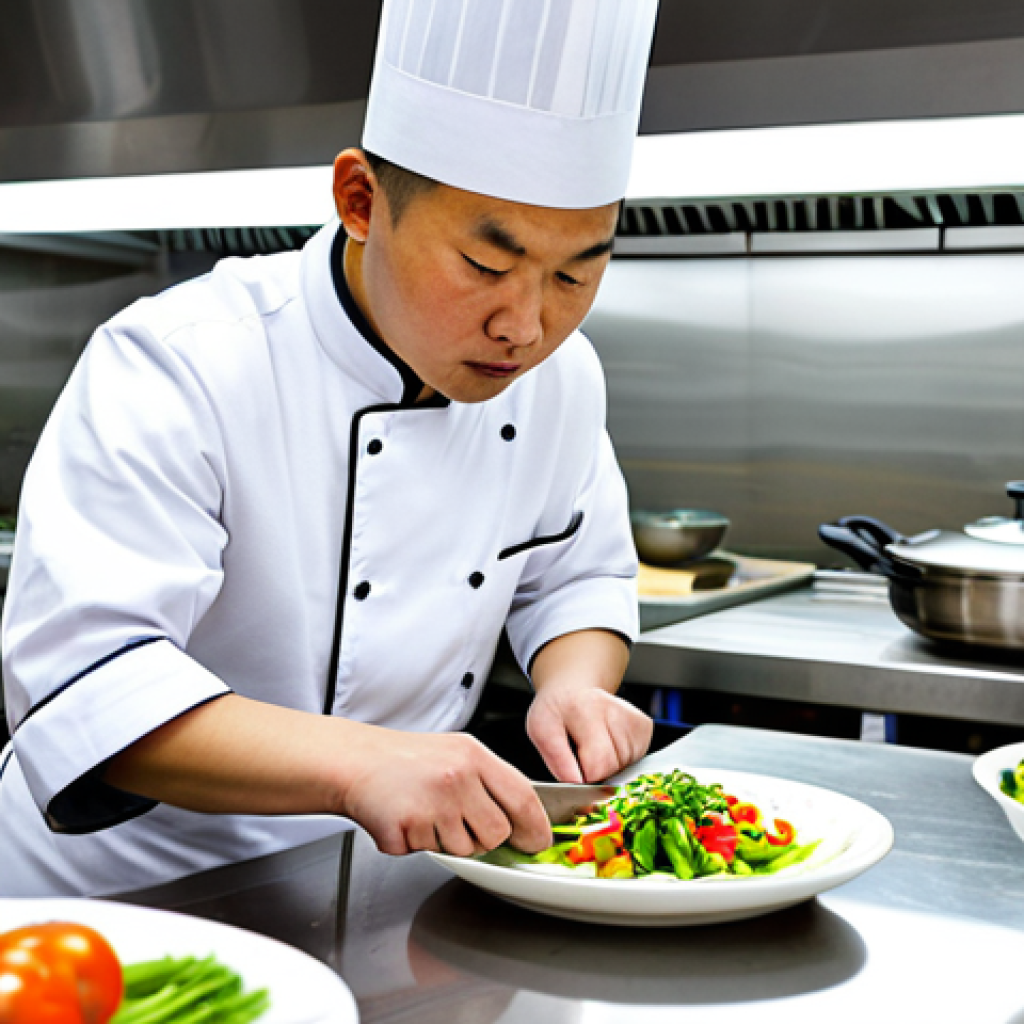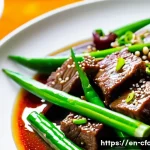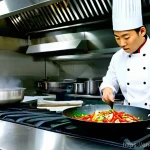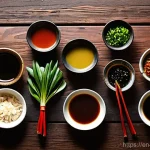The aroma of sizzling Wok Hei is unmistakable, isn’t it? It instantly transports you, evoking memories of incredible meals and the sheer artistry behind them.
We often admire the culinary magic Chinese chefs create, turning humble ingredients into masterpieces, but have you ever stopped to think about the financial reality of this demanding profession?
It’s far more complex than just a simple paycheck. From what I’ve personally observed within the bustling kitchens I’ve visited, the journey of a Chinese chef is one of relentless passion and incredibly long hours, often starting as an apprentice and honing skills for decades.
With the global demand for authentic regional Chinese cuisine skyrocketing – think beyond just takeout, towards Michelin-starred Sichuan or traditional Cantonese dim sum – the value of true expertise has seen a remarkable shift.
The culinary landscape is rapidly evolving, impacted by everything from labor shortages in major metropolitan areas to the rising popularity of specialized concepts.
Will this expertise truly pay off in today’s dynamic market? Let’s get precise about it.
The Foundation: From Apprenticeship to Mastery

When you truly observe a Chinese chef in their element, you begin to understand that their incredible speed and precision aren’t just skills; they are the distilled essence of years, sometimes decades, of incredibly hard work and dedication.
It’s not like going to a two-year culinary school and getting a certificate; this is often a hands-on, immersive journey that starts at the very bottom, scrubbing pots and cleaning vegetables.
I’ve personally witnessed young apprentices in Chinatown kitchens, their eyes fixed on the masters, absorbing every flick of the wrist, every nuance of the flame.
It’s a grueling path, one that tests your patience and your physical endurance, but it also forges an unparalleled level of expertise. They learn everything from the foundational knife cuts to the intricate balance of flavors that define truly authentic regional dishes, often without a formal curriculum, but through relentless repetition and immediate feedback.
This extended, often unpaid or minimally paid, apprenticeship period is the bedrock of their value, yet it’s often overlooked when we consider their current earnings.
It represents an immense investment of personal time and effort that doesn’t immediately translate into a high salary, which can be disheartening for those starting out, as I’ve heard many share their struggles during those lean years.
The Unsung Years of Dedication
It’s easy to romanticize the journey, but the reality for many budding Chinese chefs is a long, arduous climb. I’ve spoken with chefs who started in their early teens, working 12-14 hour days, six or even seven days a week, for very little compensation.
Think about that for a moment – years spent perfecting a craft, often living in shared, humble accommodations, and sending what little money they could back home.
Their education isn’t a tuition bill, but a literal investment of their youth and physical prime. This period isn’t just about learning recipes; it’s about understanding the very soul of the cuisine, the rhythm of the kitchen, and the unspoken communication between the team.
The discipline instilled during these formative years is what allows them to perform under immense pressure in busy restaurants later on. From what I’ve been told, the sheer resilience required to stick with it truly separates those who become culinary legends from those who eventually give up.
It’s a testament to their passion that they endure these “unsung years,” knowing that every single cut, every single stir of the wok, brings them closer to true mastery.
The Silent Mentors and Steep Learning Curves
In many traditional Chinese kitchens, mentorship is an art form itself, often quiet and observational. There isn’t always a formal lesson plan; instead, you learn by doing, by watching, and by being corrected, sometimes quite sternly.
I remember one chef telling me, with a twinkle in his eye, about the time he spent years just preparing ingredients, meticulously dicing and slicing, before he was even allowed near a hot wok.
This “silent mentorship” fosters a deep understanding of ingredients and techniques that formal culinary schools might struggle to replicate. The learning curve is steep because the stakes are high; consistency and quality are paramount.
Mistakes are costly, both in terms of wasted ingredients and, more importantly, a chef’s reputation. It’s this intense environment that builds the kind of expertise that is truly invaluable, creating chefs who can instinctively balance flavors and textures, adapting on the fly to deliver perfection, even when faced with unexpected challenges in a bustling kitchen.
Navigating the Urban Kitchens: Salary & Living Costs
When we talk about the financial realities of Chinese chefs, particularly in major Western cities like New York, London, or Toronto, it’s a tale of two cities, almost literally.
On one hand, there’s a huge demand for authentic, skilled chefs who can deliver regional specialties. On the other hand, the cost of living in these metropolitan hubs can gobble up a significant chunk of their earnings, leaving less disposable income than you might imagine, despite what appears to be a decent salary on paper.
I’ve heard countless stories from chefs who’ve moved from smaller towns or even direct from Asia, only to be shell-shocked by rent prices and daily expenses.
It’s not just about earning a wage; it’s about making that wage stretch in an incredibly expensive environment. The perception that all chefs in big cities are raking in huge sums is simply not true for the majority, especially those working in more casual dining establishments.
Even skilled Wok Hei masters, who are in high demand, find themselves constantly budgeting and making careful financial decisions.
Regional Disparities in Compensation
The salary range for a Chinese chef can vary wildly depending on the city and region they work in. From what I’ve gathered through my conversations, a chef in a bustling Chinatown in San Francisco might earn considerably more than one in a smaller town in the Midwest, but the cost of living differences often equalize the actual purchasing power.
For instance, a head chef might pull in a six-figure salary in New York City, but after rent, utilities, and transportation, they might feel just as constrained as a chef earning half that in a city with lower overheads.
This disparity means that chefs often have to make tough choices about where to ply their trade, balancing career opportunities with financial viability.
It’s a constant juggle that many of us, who work more predictable 9-to-5 jobs, rarely have to contend with. The table below illustrates some approximate salary ranges I’ve seen or heard about for experienced Chinese chefs in various urban centers, keeping in mind that these are just averages and don’t account for the full spectrum of roles or restaurant types.
| City/Region | Junior Chef (Annual USD) | Experienced Chef (Annual USD) | Head Chef/Executive Chef (Annual USD) |
|---|---|---|---|
| New York City, USA | $35,000 – $50,000 | $55,000 – $80,000 | $85,000 – $120,000+ |
| Los Angeles, USA | $32,000 – $48,000 | $50,000 – $75,000 | $80,000 – $110,000+ |
| London, UK | £25,000 – £35,000 | £38,000 – £55,000 | £60,000 – £90,000+ |
| Vancouver, Canada | CAD $30,000 – $45,000 | CAD $50,000 – $70,000 | CAD $75,000 – $100,000+ |
The Hidden Expenses of City Life
Beyond just rent, living and working in a major city as a chef comes with a host of often-overlooked expenses that chip away at their income. Think about transportation – often late-night commutes after closing the kitchen, sometimes relying on expensive ride-shares or extended public transport journeys.
Then there are the specific tools of their trade: high-quality knives, aprons, and specialized uniform components that need constant maintenance or replacement.
The physical demands of the job also mean more visits to a chiropractor or physiotherapist than the average office worker. I’ve heard chefs lamenting how a seemingly decent hourly wage quickly dwindles when you factor in the cost of a quick meal during a short break, or the need for comfortable, durable, and often expensive, non-slip footwear.
These aren’t luxuries; they are necessities for surviving the demanding environment of a professional kitchen. It’s these “hidden expenses” that often make the perceived higher wages in big cities feel less substantial once the bills are paid.
The Michelin Effect: Elevating Earnings Through Prestige
For many chefs, a dream goal isn’t just to cook well, but to cook well enough to be recognized by the culinary world’s most prestigious guides, like Michelin.
Earning a Michelin star, or even working in a restaurant that holds one, can dramatically alter a Chinese chef’s earning potential and career trajectory.
It’s not merely about bragging rights; it’s about being validated at the absolute pinnacle of their craft. I’ve witnessed firsthand the palpable excitement and intense pressure in kitchens vying for these accolades.
The level of meticulousness, consistency, and innovation required is immense, and naturally, chefs who can consistently deliver at this level command significantly higher salaries.
They are seen as true artists and experts, and their skills are sought after by high-end establishments willing to invest heavily in culinary talent. This kind of recognition opens doors to new opportunities, from lucrative endorsement deals to the chance to open their own highly anticipated restaurants.
Star Power: The Premium for Fine Dining Expertise
Working in a Michelin-starred Chinese restaurant, or one aspiring to that level, isn’t just another job; it’s an incredibly demanding, high-pressure environment where perfection is the baseline.
Chefs in these establishments are expected to execute dishes with unwavering precision, often pushing the boundaries of traditional Chinese cuisine while respecting its roots.
This intense demand for excellence naturally comes with a premium in terms of compensation. From what I’ve seen, a sous chef in a two-star Chinese restaurant in London could easily earn 30-50% more than their counterpart in a reputable, but un-starred, eatery.
The skills they hone here – from intricate plating to experimental flavor combinations – are highly specialized and rare. It’s a direct reflection of the market valuing unparalleled expertise.
They are often pioneers, influencing trends and setting new benchmarks for quality and innovation within the Chinese culinary landscape, which adds to their intrinsic value.
Beyond the Plate: Brand Building and Opportunities
A Michelin star, or similar high-level recognition, extends a chef’s influence far beyond the confines of their kitchen. It transforms them into a culinary celebrity, capable of building a personal brand.
I’ve seen how this prestige can unlock a cascade of other lucrative opportunities. This might include:
*
1. Cookbook deals: Publishers eager to capture their unique recipes and culinary philosophy.
*
2. Television appearances: Becoming a guest on cooking shows, showcasing their skills to a wider audience.
*
3. Brand ambassadorships: Partnering with high-end ingredient suppliers, kitchen equipment manufacturers, or even luxury brands.
*
4. Consulting gigs: Advising new restaurants on menu development, kitchen design, or operational efficiency.
*
5. Guest chef appearances: Command significant fees for special dinners or culinary events globally.
It’s no longer just about the salary they earn from their primary role; it’s about the entire ecosystem of opportunities that opens up. This diversification of income streams, fueled by prestige, allows them to leverage their expertise in incredibly profitable ways that most traditional chefs simply cannot access.
Beyond the Wok: Diversifying Income Streams
While the traditional image of a Chinese chef is someone tirelessly working over a flaming wok in a bustling kitchen, the modern culinary landscape offers far more avenues for a skilled chef to earn a living.
I’ve been fascinated by how many chefs, especially those with a strong reputation and unique specialization, are now looking beyond the confines of a single restaurant.
It’s a smart move in an industry that can be incredibly demanding and, at times, unpredictable. This trend towards diversification isn’t just about earning more; it’s also about achieving a better work-life balance and gaining more control over their careers.
They’re leveraging their deep knowledge and practical skills in creative ways that were perhaps less common a decade or two ago, truly making their expertise work for them in multiple capacities, which I personally find incredibly inspiring to witness.
Consulting and Culinary Education
Many highly experienced Chinese chefs, especially those with decades of practical wisdom, are finding lucrative opportunities in consulting. New restaurants, hotels, or even established chains often seek their expertise to:
*
1. Develop authentic regional menus that resonate with modern diners.
*
2. Optimize kitchen layouts and workflows for maximum efficiency.
*
3. Train new culinary teams on specific techniques, from dim sum mastery to Sichuan stir-frying.
*
4. Advise on ingredient sourcing and supplier relationships to maintain quality and cost-effectiveness.
This type of work often pays significantly more than a regular chef’s salary, and it provides a less physically demanding alternative to daily kitchen shifts.
Additionally, teaching at culinary schools, conducting private cooking classes, or hosting workshops for home cooks has become a popular way to share their knowledge and earn income.
I’ve seen firsthand the genuine enthusiasm from students eager to learn the secrets of perfect dumpling folding or authentic Wok Hei directly from a master.
Media Presence and Product Endorsements
In our increasingly digital world, a chef’s skill can now be broadcast to millions. Talented Chinese chefs are building substantial followings on platforms like YouTube, Instagram, and TikTok, where they share recipes, cooking tips, and insights into their culinary traditions.
This digital presence can lead to:
*
1. Monetized video content: Earning revenue from ads on their channels.
*
2. Sponsored posts and brand deals: Collaborating with food brands, kitchenware companies, or even tourism boards.
*
3. Online courses and e-cookbooks: Selling premium content to their dedicated followers.
Moreover, established chefs are often approached for product endorsements, lending their credibility to a range of items from woks and cleavers to sauces and specialty ingredients.
I remember seeing a renowned Cantonese chef endorsing a specific brand of soy sauce, and thinking, “Wow, his trust alone is worth so much to that company!” These opportunities, which were once reserved for celebrity chefs, are now accessible to any chef willing to cultivate a strong online presence and demonstrate their unique expertise.
Regional Flavors, Global Paychecks: Geographical Impact on Earnings
It’s a fascinating dynamic, the way different corners of the world value specific culinary skills. When it comes to Chinese cuisine, the pay scale for a chef isn’t just about their skill level; it’s heavily influenced by where that skill is applied.
What I’ve personally observed is that the demand for authentic regional Chinese cooking, whether it’s fiery Sichuan or delicate Cantonese dim sum, creates distinct pockets of opportunity and varied salary expectations across continents.
A chef specializing in, say, Shanghainese cuisine might find a niche market in a major American city willing to pay a premium for their unique expertise, whereas that same specialty might be commonplace, and thus less lucrative, in Shanghai itself.
It really highlights how globalization affects not just what we eat, but also the economic realities of those who prepare our food.
East Meets West: Bridging the Pay Gap
There’s a noticeable difference in earning potential for Chinese chefs operating in the West compared to those in mainland China or other parts of Asia.
While Asian cities like Hong Kong or Singapore certainly have high-paying roles for top-tier chefs in fine dining, the sheer volume of culinary talent means competition can be fierce.
In contrast, Western markets, especially those with a growing appreciation for nuanced Chinese regional cuisines beyond general takeout, often face a shortage of highly specialized chefs.
This scarcity creates a scenario where a skilled chef, particularly one proficient in a less common regional style (think Yunnan or Anhui cuisine), can command a significantly higher salary in places like North America or Europe.
It’s the classic supply and demand principle at play; if you have a unique skill that’s rare in a particular market, your value skyrockets. From talking to chefs who’ve made the move, the transition is often driven by a desire for better financial prospects and a higher quality of life, even if it means adjusting to a completely new culture.
Specialization vs. Generalization: Where the Money Is
Within any given region, a chef’s specialization also plays a crucial role in their earning capacity. While a generalist who can handle various types of Chinese dishes is always valuable, the real premium is often placed on deep specialization.
For example, a “Wok Hei Master” who can consistently achieve that elusive smoky aroma in stir-fries, or a “Dim Sum Sifu” known for perfectly translucent wrappers and exquisitely flavored fillings, often earns more than a general Chinese cuisine chef.
I’ve heard restaurateurs in New York and London specifically seeking out chefs with these highly refined, specific skill sets, even offering relocation packages to bring them over.
It’s because these specialists are seen as attracting a very particular clientele, elevating the restaurant’s reputation and drawing in food connoisseurs.
The market recognizes and rewards this depth of expertise, understanding that it takes years of dedicated practice to master these niche areas, making such chefs irreplaceable assets.
The True Cost of Culinary Passion: Lifestyle & Sacrifices
While we’ve been delving into the monetary aspects of a Chinese chef’s career, it would be disingenuous to ignore the immense personal cost and sacrifices involved.
The “glamour” of a busy kitchen often masks incredibly long hours, intense physical demands, and significant strain on personal lives. From what I’ve personally seen and heard, the passion these chefs have for their craft is undeniable, but it comes at a price that goes far beyond any paycheck.
It’s a career that demands almost everything from you, often requiring you to miss out on family events, holidays, and even simple social gatherings because the kitchen never stops.
This relentless schedule and high-pressure environment can lead to burnout, which is a very real concern that needs to be acknowledged when we discuss the “value” of this profession.
It’s not just about cooking; it’s about a lifestyle that intertwines every aspect of their being with the culinary world.
The Physical and Mental Toll
Let’s be brutally honest: being a chef is physically grueling. Standing for 12-14 hours on hard kitchen floors, lifting heavy pots, working in sweltering heat, and dealing with sharp knives and open flames – it takes a serious toll on the body.
I’ve seen chefs with chronic back problems, carpal tunnel syndrome from endless chopping, and scars that tell stories of years spent in the heat of battle.
But it’s not just the physical aspect; the mental pressure is immense. Meeting customer expectations, managing staff, ensuring consistency under tight deadlines, and dealing with the inevitable stresses of a fast-paced environment can lead to significant mental fatigue and stress.
The late-night shifts and early mornings disrupt natural sleep patterns, adding another layer of challenge. It truly makes you appreciate the resilience and sheer mental fortitude required to not only survive but thrive in this profession.
It’s a level of dedication that most people would find utterly unsustainable.
Balancing Family Life and Kitchen Demands
One of the most poignant themes I’ve encountered in speaking with Chinese chefs is the constant struggle to balance their demanding careers with their family lives.
Birthdays, anniversaries, school plays – these often get sacrificed for the demands of the kitchen, especially on weekends and holidays when restaurants are busiest.
Many chefs talk about the guilt they feel missing out on moments with their children or partners. The irregular hours and the sheer exhaustion after a long shift can also make quality family time difficult even when they are home.
Some chefs I’ve met have children who barely remember them being home before bed on most days. This aspect of the profession is a silent cost, a personal sacrifice that isn’t reflected on a balance sheet but deeply impacts their well-being and relationships.
It’s a powerful reminder that while the culinary arts bring joy to millions, they often demand profound personal sacrifices from those who practice them.
Future-Proofing Your Knife Skills: Adapting to Market Shifts
The culinary world is anything but static. Just like any other industry, it’s constantly evolving, influenced by technology, changing consumer preferences, and global economic shifts.
For Chinese chefs, staying relevant and ensuring long-term financial stability means being adaptable and willing to embrace new ways of working and learning.
I’ve been truly impressed by how many traditional chefs, initially wary of things like social media or online delivery platforms, are now enthusiastically adopting them.
This proactive approach to adapting their skills and business models is crucial for future-proofing their careers in an increasingly competitive and dynamic market.
It’s about recognizing that while traditional culinary skills are paramount, combining them with modern tools and strategies can unlock entirely new avenues for success and income.
Embracing Technology and Online Presence
In today’s interconnected world, a chef’s presence extends beyond the four walls of their kitchen. Many Chinese chefs are now actively building online brands, creating digital content, and leveraging technology to reach wider audiences.
This includes:
*
1. Social Media Marketing: Showcasing their dishes, behind-the-scenes glimpses, and culinary philosophy on platforms like Instagram and TikTok to attract new customers and build a loyal following.
*
2. E-commerce: Selling proprietary sauces, spice blends, or even frozen dim sum directly to consumers online.
*
3. Online Cooking Classes: Offering virtual workshops for home cooks eager to learn authentic techniques.
*
4. Food Delivery Apps: While challenging, many chefs are adapting their menus and operations to thrive on popular delivery platforms, expanding their reach beyond dine-in customers.
I’ve seen chefs who were once skeptical about technology now expertly navigating these digital spaces, realizing that a strong online presence can significantly boost their restaurant’s visibility and their personal brand, directly impacting their revenue and job security.
It’s about being where the customers are, and increasingly, that’s online.
The Rise of Niche Cuisines and Pop-Ups
Consumer tastes are becoming increasingly sophisticated, moving beyond generic “Chinese food” to a craving for highly specific regional dishes. This trend is creating new opportunities for chefs specializing in niche cuisines.
Instead of just opening a traditional restaurant, many chefs are exploring:
*
1. Pop-Up Restaurants: Hosting temporary dining experiences that allow them to test new concepts, build hype, and generate income with lower overheads than a permanent establishment.
*
2. Supper Clubs: Offering exclusive, intimate dining experiences often focused on a hyper-specific regional menu, attracting a dedicated clientele willing to pay a premium.
*
3. Food Trucks/Stalls: Bringing authentic, specialized street food concepts to a broader audience in a more mobile and often more profitable format.
I’ve personally loved seeing the explosion of specialized noodle shops or dumpling houses focusing on just one or two types of dishes but executing them perfectly.
This kind of focused expertise resonates deeply with modern diners who seek authenticity and quality. By embracing these niche markets and innovative business models, Chinese chefs are not only diversifying their income streams but also preserving and celebrating the incredible diversity of their culinary heritage in ways that are both economically viable and culturally enriching.
Conclusion
After exploring the incredible journey of Chinese chefs, it’s clear their path is a testament to immense dedication, skill, and passion. From grueling apprenticeships to the demands of Michelin-starred kitchens, their success is hard-won, often requiring significant personal sacrifices.
Yet, with evolving global appreciation for authentic regional flavors and the smart adoption of modern opportunities, the future offers exciting new avenues for these culinary masters to thrive, proving their artistry truly transcends borders and generations.
It’s a profession that deeply enriches our tables, built on a foundation of true grit and an unwavering love for food.
Useful Information
1. Traditional apprenticeships are often long and demanding, offering invaluable hands-on experience that formal culinary schools may not fully replicate.
2. Salaries for Chinese chefs vary significantly by city and region, with higher cost-of-living areas often balancing out seemingly larger paychecks.
3. Specializing in a niche Chinese cuisine (e.g., specific regional dishes, dim sum, Wok Hei) can lead to higher earning potential due to increased demand for unique expertise.
4. The job is physically and mentally taxing; long hours, high pressure, and prolonged standing are common, significantly impacting work-life balance.
5. Embracing technology, building an online presence, and exploring diversified income streams like consulting or pop-up restaurants are crucial for career growth and stability in the modern culinary landscape.
Key Takeaways
Chinese chefs typically embark on rigorous, often traditional apprenticeships, forging deep culinary expertise. Their earnings are highly variable, influenced by location and specialization, with major city salaries often offset by high living costs.
Prestigious accolades, like Michelin stars, can significantly boost income and unlock diverse opportunities. Modern chefs increasingly diversify their income through consulting, media presence, and niche culinary ventures.
This demanding career requires immense personal sacrifice but is fueled by profound passion, with adaptability to market shifts being essential for long-term success.
Frequently Asked Questions (FAQ) 📖
Q: So, what’s a realistic starting point for a Chinese chef’s salary, especially when they’re just starting out as an apprentice? Does it even cover the incredibly high cost of living in major cities where these kitchens often thrive?
A: Honestly, it can be a real shock to the system, and it definitely puts a damper on any romantic notions of instant culinary stardom. From what I’ve seen and heard from chefs directly, an apprentice or even a junior cook in a bustling Chinese kitchen, say in a big city like Toronto or Los Angeles, might start barely above minimum wage.
We’re talking perhaps $16 to $22 an hour, if they’re lucky. And let’s not forget, those hours are utterly brutal—often 60 to 70 hours a week, maybe more, especially during peak seasons like Chinese New Year.
It’s less about the immediate paycheck and more about the invaluable, hands-on trade they’re learning, the kind you can’t get in any culinary school. For years, they’re often just scraping by, sharing cramped apartments, and sacrificing a lot.
It’s a true test of passion, because the early financial rewards are, without a doubt, incredibly humble.
Q: Okay, but as they gain that incredible expertise, does it truly translate into a significantly higher income? What factors actually drive that increase in their earning potential?
A: Absolutely, it does, but it’s far from an overnight leap; it’s a slow burn. Once a chef genuinely masters a specific regional cuisine – imagine someone renowned for their authentic Hunanese spice profiles or their incredibly delicate Cantonese dim sum – their market value absolutely skyrockets.
This isn’t just about being a good cook; it’s about being a master. We’re talking about head chef positions in high-end, reputable restaurants, where a seasoned executive chef could be pulling in anywhere from $80,000 to $150,000 annually, sometimes even more if they’re in a prestigious, high-volume establishment like a top spot in New York City or London.
The surging global demand for authentic, regional Chinese cuisine, moving beyond generic takeout, means true expertise is highly coveted. Michelin stars, glowing critical reviews, a loyal following, or even owning a signature dish that draws crowds can significantly bump up their earning potential.
Plus, with the current labor shortages across the culinary industry, a truly skilled, reliable Chinese chef often has a bit more leverage to negotiate for better terms.
It’s the unique combination of artistry, years of gruelling practice, and the current market’s hunger for authenticity that really pushes their income upwards.
Q: Beyond just being a chef in a restaurant, what are the long-term financial prospects and career paths? Can this profession genuinely lead to financial security or even wealth, or is it typically just a hard-earned living?
A: That’s the hopeful, yet challenging, question every aspiring chef asks, isn’t it? For the vast majority, it’s a decent, albeit incredibly demanding, living.
But for a select few, yes, it can absolutely lead to substantial financial security and, in some cases, even significant wealth. The path isn’t just staying on the line, cooking day in and day out.
Many skilled chefs transition from head chef to executive chef, overseeing multiple kitchens for a restaurant group, which brings in a much healthier salary and management bonuses.
The real game-changer for many, though, is entrepreneurship: opening their own place. While this is inherently risky and often requires immense capital and even more grueling hours, if a chef hits that sweet spot – like a wildly popular noodle shop in a bustling food hall or a critically acclaimed regional restaurant – the financial rewards can be substantial.
I’ve seen chefs leverage their reputation into lucrative consulting gigs for other restaurants, secure cookbook deals, or even venture into culinary media or teaching.
It’s about building a brand, nurturing a unique vision, and taking calculated business risks. It’s by no means an easy road to riches, but for those with the unwavering grit, business savvy, and undeniable talent, the potential is certainly there to not just make a good living, but to truly thrive and build a lasting legacy.
📚 References
Wikipedia Encyclopedia
구글 검색 결과
구글 검색 결과
구글 검색 결과
구글 검색 결과
구글 검색 결과






